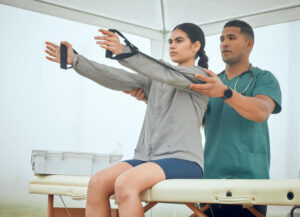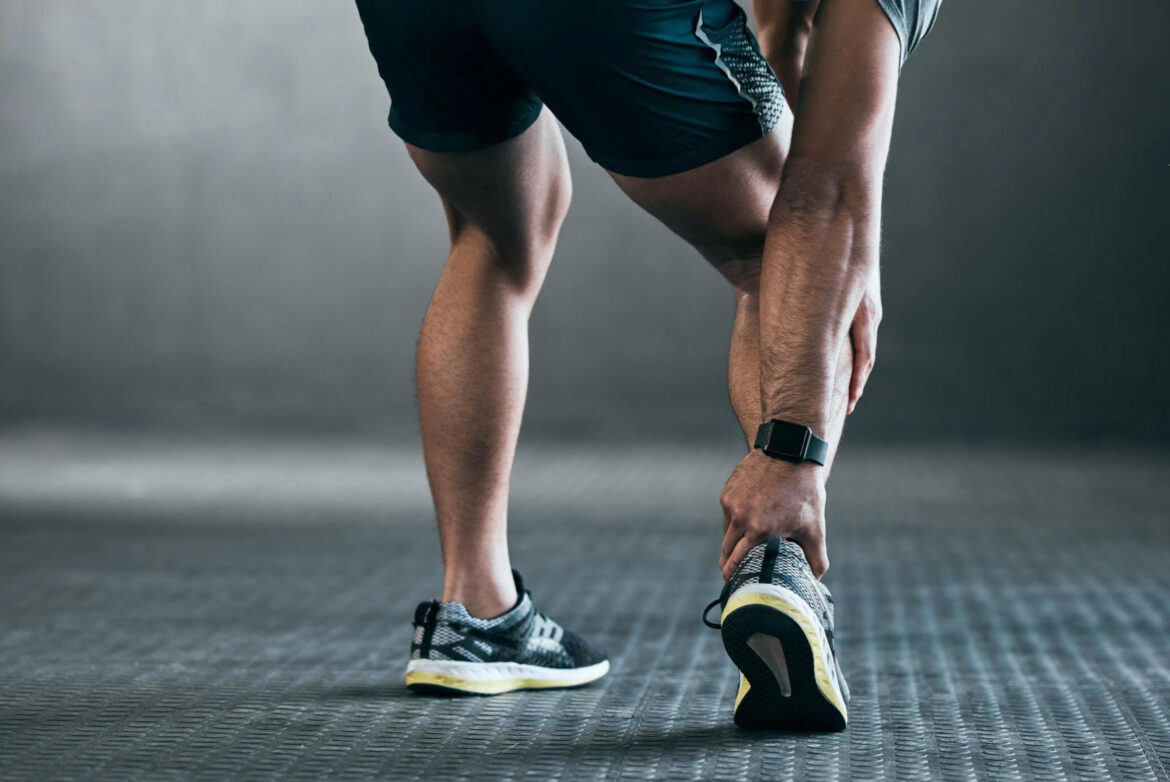Let us learn about the most common types of sports injuries and the best ways of how to prevent them
The sports world is very active, and unfortunately, one thing that athletes aim to avoid is injury. One can suffer from minor sprains to major fractures which are sport-related injuries in intensity. They vary in their severity and magnitude.
Having a clear idea of the most common injury types in athletics and realizing how to avoid them is fundamental even for the less experienced athletes. In this extensive playout, we shall attempt to disclose the playbook of pain, identify top sports injuries, and offer useful strategies to prevent them.
Some Common Sports Injuries:
Strains and Sprains:
The most common sports injuries are sprains and strains, and among such sprains and strains muscles, ligaments, and tendons are usually affected. Such damages develop when a person does too much exercise (overexertion), doesn’t warm up, or suddenly moves.
Some measures that can be employed before a workout session include warm-ups, stretching, and the incorporation of strength and fitness exercises. These exercises help to improve the body’s flexibility and stability.
Fractures and Dislocations:
For example, when basketball or boxing are being mentioned, or any activities involving high-intensity movement, fractures (broken bone) and dislocations are common.
Protective equipment evolves in the form of helmets, pads, and splints, which help limit the possibility of such bruises. Furthermore, maintaining good technique and stopping one from partaking in risky stunts and tricks can reduce the chances of fractures and dislocating the joints.
Tendonitis and Bursitis:
Often these injuries tend to develop over time through the repetition of motions or overstraining of joints. They are popular with the recruitment industry as they seek to cut costs associated with labor and skill shortages, and employee retention or perception.
A good balance of recovery, cross-training, and accessing variety in workouts may help the conditions. The correct tools, e.g., comfortable footwear and ergonomic ones, may also help prevent joint discomfort.
Concussions:
Headaches, especially concussions, stand out as a major matter, in which sports, such as football, ice hockey, and soccer, are not excluded. An athlete should always wear suitable protection and abide by the set safety rules to help minimize the risk of concussions.
Creating awareness among people regarding the indicators and symptoms of concussion and encouraging them to get immediate assessment and treatment is fundamental to preventing the underlying complications.
Overuse Injuries:
Multiple types of overuse injuries such as strains, stress fractures, and tendinopathy result as a consequence of the lack of proper rest and recovery from the repetitive stress exerted on the body.
Athletes can minimize the risks of repeated injury problems when they put rest days in their training schedule, mix up their workouts, and remember to listen to their bodies so they know when to take a break.
Growth in increments and proper methods are also basic in limiting the risk of overuse injuries. Injury prevention in sports is a multifaceted approach, which involves training, technique, equipment, and raising awareness.
With appropriate knowledge of the most common sports injury types and the implementation of preventive measures, the athletes stay healthy and perform to the best of their ability and in their favorite sports safely.
What are some specific techniques or exercises for common sports injuries at Sports Injury Treatment in Mohali?

Preventing sports injuries is crucial for maintaining optimal athletic performance and overall well-being.
Incorporating specific techniques and exercises into your training regimen can help reduce the risk of common sports injuries. Here are some effective strategies:
Warm-Up Routine:
Begin each workout or sports activity with a thorough warm-up session. Dynamic stretches, light cardio exercises (such as jogging or jumping jacks), and sport-specific movements prepare your body for the demands of physical activity. Focus on increasing blood flow to the muscles, improving flexibility, and activating key muscle groups involved in your sport.
Strength Training:
Incorporate strength training exercises into your routine to build muscle strength and endurance. Target both large muscle groups and stabilizing muscles to enhance overall stability and support. Include exercises such as squats, lunges, deadlifts, push-ups, and rows to improve functional strength and reduce the risk of muscle imbalances.
Flexibility and Mobility:
Perform regular stretching exercises to improve flexibility and joint mobility. Focus on areas prone to tightness or stiffness, such as the hamstrings, quadriceps, hips, and shoulders. Incorporate dynamic stretching, static stretching, and foam rolling techniques to increase the range of motion and prevent muscle strains and sprains.
Proper Technique:
Practice and perfect proper technique for your sport or activity to reduce the risk of overuse injuries and biomechanical imbalances. Seek guidance from a coach, trainer, or experienced athlete to ensure correct form and execution. Pay attention to body mechanics, posture, and alignment during movements to minimize stress on joints, muscles, and ligaments.
Cross-Training:
Incorporate cross-training activities into your routine to prevent overuse injuries and promote overall fitness and conditioning. Engage in various activities such as swimming, cycling, yoga, or Pilates to reduce repetitive strain on specific muscle groups. Cross-training also helps improve muscular balance, coordination, and cardiovascular endurance, enhancing overall athletic performance.
Rest and Recovery:
Allow adequate time for rest and recovery between workouts and training sessions. Overtraining and insufficient recovery can increase the risk of injury and lead to burnout. Listen to your body and prioritize rest days, sleep, and proper nutrition to support muscle repair and recovery.
Injury Prevention Programs:
Participate in structured injury prevention programs designed for your sport or activity. These programs typically include targeted exercises, drills, and interventions to address specific injury risk factors. Seek guidance from a qualified coach, physiotherapist, or sports medicine professional to develop a personalized injury prevention plan based on your individual needs and goals.
By incorporating these techniques and exercises into your training routine, you can proactively reduce the risk of common sports injuries and optimize your athletic performance and longevity. Remember to stay consistent, listen to your body, and prioritize injury prevention as an integral part of your overall fitness and training regimen. Injury prevention and rehabilitation are key factors that we consider to determine athlete wellness and performance.
Being the best physiotherapy centre in Zirakpur, we provide individualized treatment protocols, the most advanced facilities, and knowledgeable physiotherapists who are committed to helping athletes heal from injuries and get back to their sports level. Through a personalized approach and based on proof, Brar’s Physio Care ensures that athletes reach top physical condition and level of performance.

Conclusion:
As the best physiotherapist in Chandigarh, we focus on helping top athletes, fitness enthusiasts, and weekend warriors by providing complete solutions for various sports injuries.
Our team of experienced physiotherapists by using advanced methods and different modalities heal acceleration, pain reduction, and function restoration allowing injured athletes to get back to their sport safely and confidently.
Brar’s Physio Care, renowned as the best place to address sports injury treatment in Mohali, is an organization with patient-centered care and excellence in physiotherapy as its main priorities. With the excellence that we stand by, the empathy we act with, and our innovative practices, we are unrivaled specialists in treating athletes who desire the best care and vigilance.
Whether you are seeking recovery from sports injuries or enhancing your performance, consider Brar’s Physio Care, where we know your aim and come to help you get there. See the difference we can make with our world-class installations, personalized approach to treatment, and caring and competent work team. Revitalize your athletic performance priorities with Brar’s Physio Care which is dedicated to your health and essential for your well-being.

